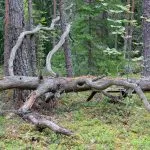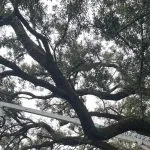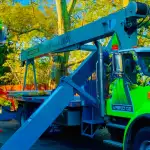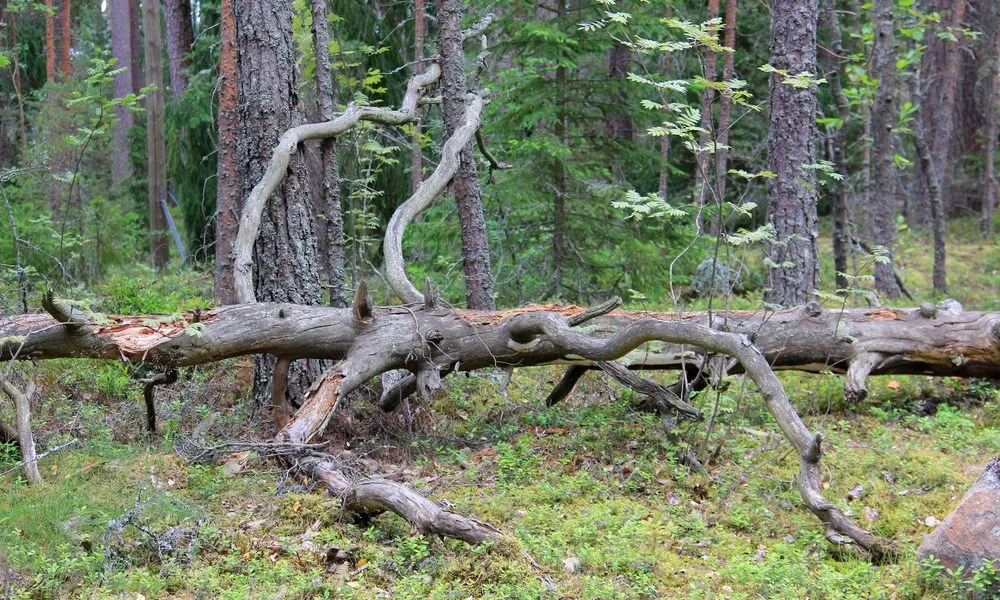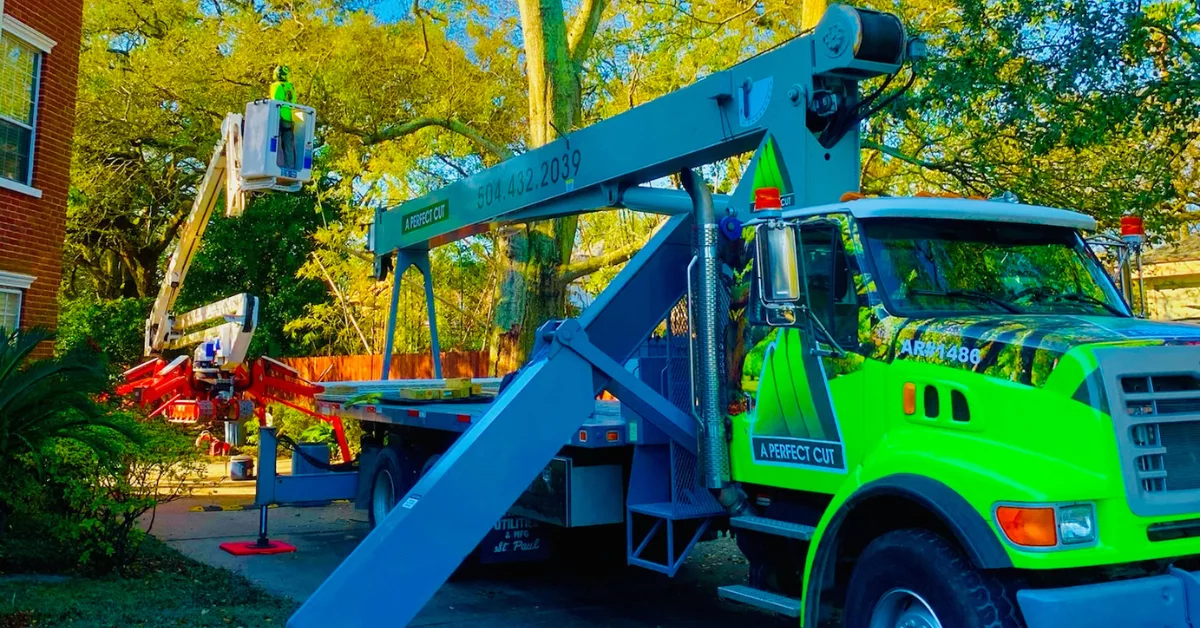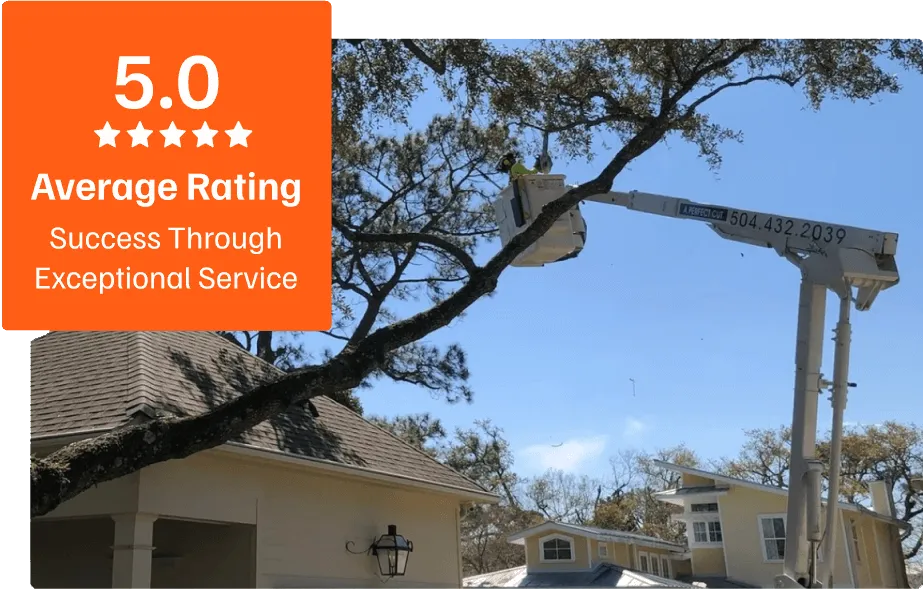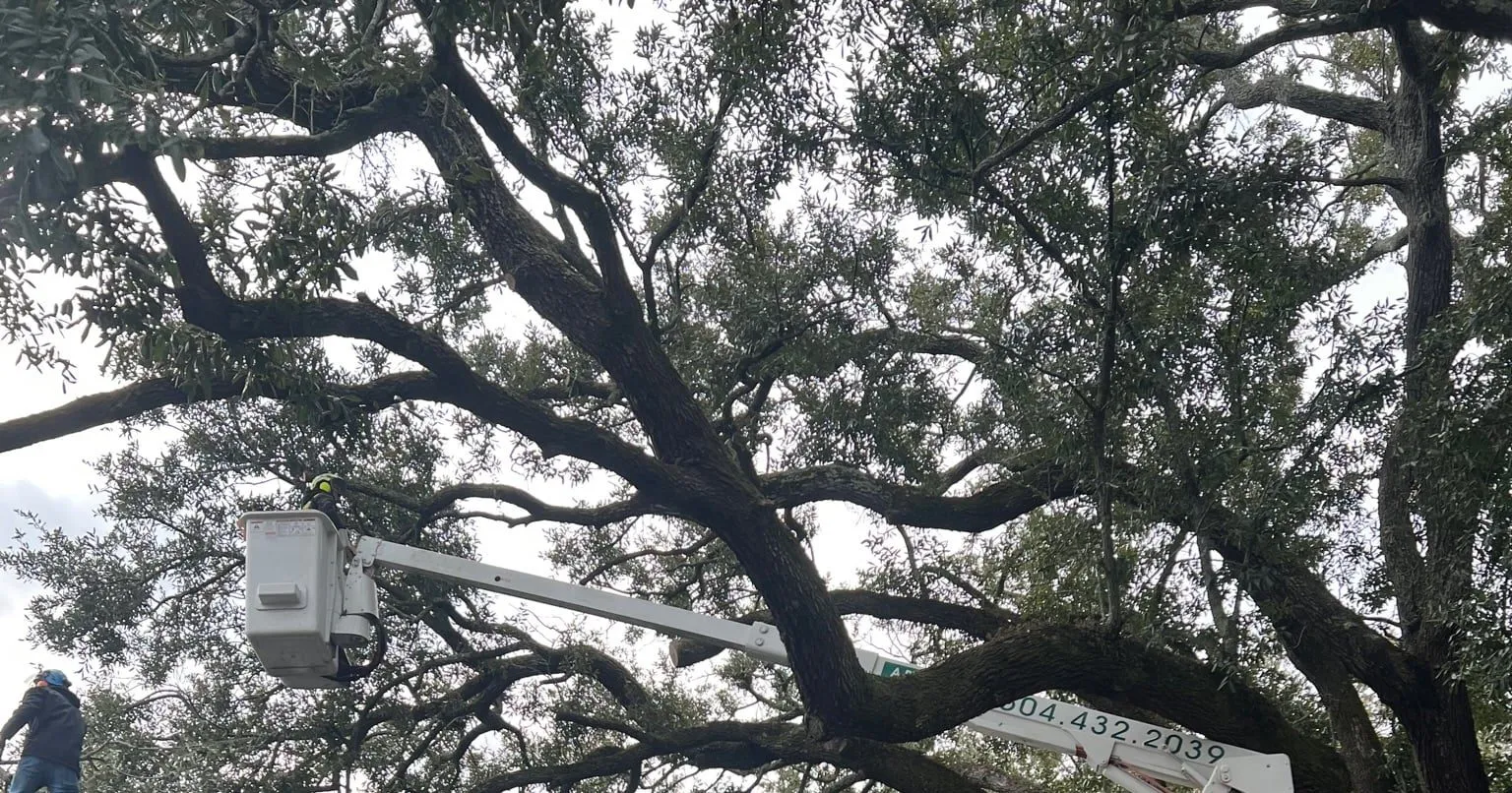
In storm-prone cities like New Orleans, tree failures are a frequent cause of property damage. Roots weakened by wet soils, branches stressed by wind, or old, decaying trunks can collapse without warning. Spotting these risks early can prevent costly damage and help keep your property safe.
August 18, 2025
Trees are vital to any property. They provide shade, beauty, and even boost real estate value. But not every tree is a safe one. Some trees can pose serious risks to your home, your safety, and your neighbors, especially in a region like New Orleans, where heavy rains, strong winds, and waterlogged soils are common.
This blog breaks down the most important warning signs to watch for before a tree becomes a hazard.
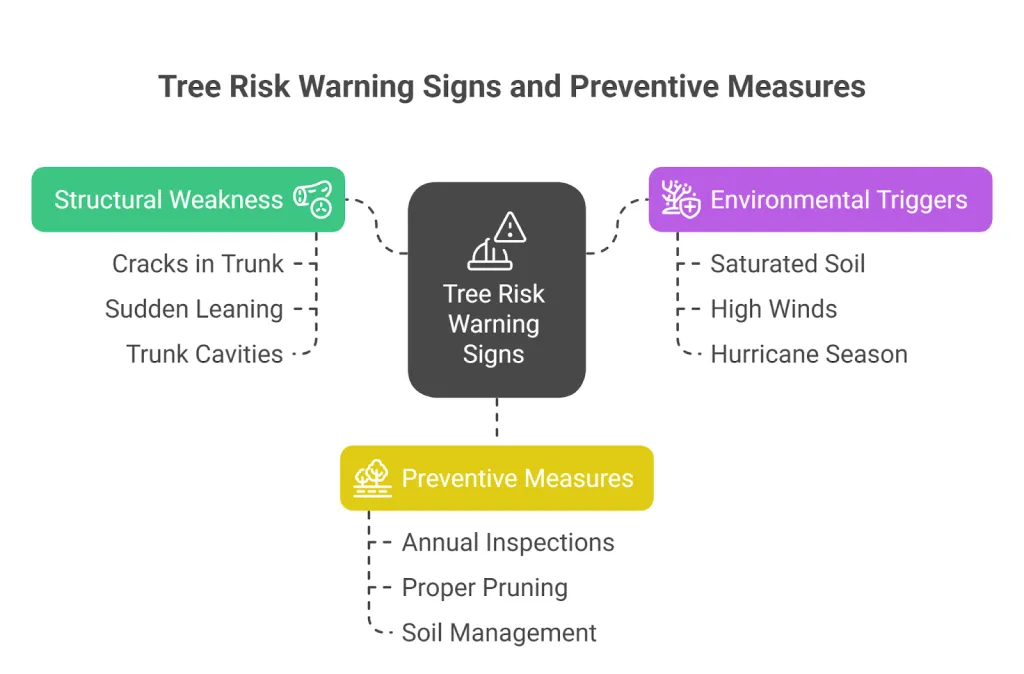
Common Warning Signs of Tree Trouble
1. Cracks in the Trunk or Major Limbs
Visible cracks or splits may signal structural weakness. These are often found after storms, lightning strikes, or years of stress. Deep cracks, especially those that extend into the trunk, can mean the tree is unstable.
2. Sudden Leaning
A tree that starts leaning noticeably, especially after heavy rain or wind, could be suffering from root damage or soil instability. Even if it doesn’t fall right away, this is a serious red flag.
3. Mushrooms or Fungal Growth at the Base
Fungi at the base of the trunk or on roots often signal internal decay. The tree might look healthy aboveground but could be hollow or rotten inside.
4. Dead or Hanging Branches
Large dead limbs can break off unexpectedly, especially during high winds. Branches that hang loosely or appear brittle need immediate attention.
5. Damaged or Exposed Roots
Roots that are cracked, severed, or lifting from the ground can destabilize the entire tree. Root plate failure (where the base of the tree begins to lift or shift) is a major hazard.
6. Trunk Cavities or Hollow Areas
Hollow trees aren’t always unsafe, but cavities combined with other issues like cracks or fungi can indicate a serious risk. They reduce the structural strength of the trunk.
7. Nearby Construction Damage
Excavation or heavy equipment used near trees can compact soil or cut into root zones. These injuries may take time to show symptoms but often result in long-term decline or failure.
Environmental and Seasonal Triggers
- Saturated Soil: After days of rain, soil loses its grip on roots. Even healthy trees can topple under their own weight.
- High Winds or Tropical Storms: These can snap limbs, uproot trees, or stress weak structures.
- Hurricane Season: Trees already under stress may not withstand another severe event. Annual inspections are highly recommended before peak storm season.
Risk Level and Action Table
| Warning Sign | Potential Risk Level | Recommended Action |
| Cracks in trunk or limbs | High | Immediate inspection |
| Sudden leaning | High | Contact certified arborist |
| Fungal growth at base | Medium to High | Internal decay evaluation |
| Dead or hanging branches | Medium | Pruning or removal |
| Damaged or exposed roots | High | Root zone assessment |
| Trunk cavities | Medium | Structural analysis |
| Nearby construction impact | Varies | Long-term health monitoring |
How Trees Are Evaluated by Arborists
Tree risk assessments rely on hands-on experience, not guesswork. Arborists look at structure, signs of disease, and site conditions. They might tap the trunk, inspect the base, or even climb the tree to examine stress points. The goal is always to understand the risk and recommend action that balances safety and preservation.
Signs You Shouldn’t Ignore After a Storm
If a storm just passed through and something feels off with your tree, pay attention. Fresh cracks, a sudden lean, or broken branches caught in the canopy can all point to trouble. Don’t wait to see what happens. Even small signs can become major issues quickly when weather hits again.
How Your Soil Tells the Story
Soil around a tree tells you a lot. Pooling water, shifting ground, or roots starting to show above the surface might mean the tree’s foundation is compromised. These symptoms often go unnoticed until it’s too late. Pay attention to changes, especially after construction or heavy rain.
Tree Warning Signs That Often Get Overlooked
Some tree dangers are easy to miss. A branch that’s rubbing against another can weaken over time. Discoloration in the leaves might hint at deeper issues. Even excess mulch around the trunk can trap moisture and cause rot. It’s these subtle signs that a trained eye will catch before they become emergencies.
When to Call a Professional
If you see any of the signs above, or if something just doesn’t feel right, it’s worth getting a second opinion. A certified arborist can inspect your tree, explain what’s happening, and guide you on the next step. Sometimes a small fix today prevents a big problem tomorrow.
Preventive Tree Care Tips
- Get your trees inspected once a year by someone qualified
- Keep limbs trimmed back from roofs and power lines
- Check soil drainage and avoid compacting it around roots
- Choose the right tree for the right spot when planting
- Don’t ignore changes, even if they seem small
Frequently Asked Questions
What is the most common cause of tree failure?
Soggy soil and damaged roots are often to blame, especially after storms.
Can a tree fall without any warning signs?
Yes. Sometimes the signs are underground or hidden. Regular inspections catch what you can’t see.
Do all leaning trees need to be removed?
Not always. Some can be stabilized with supports. It depends on the root health and angle of lean.
What kind of trees are more prone to falling in storms?
Shallow-rooted trees or those with heavy canopies like water oaks tend to fall more often.
Does tree trimming help prevent breakage?
Definitely. It lightens the load and removes weak or dead limbs.
How can I tell if my tree is sick?
Look for thinning leaves, peeling bark, oozing sap, or sudden color changes. These are signs of stress or disease.
Who handles tree issues near streets or sidewalks?
If the tree is on public property, contact your local city services. In New Orleans, 311 is the starting point.
Conclusion
Tree issues don’t always show themselves until damage is done. But if you know what to look for, you can catch the warning signs early. That’s how you protect your home, your neighbors, and your peace of mind. Make tree care part of your routine, not just something you worry about when storms are in the forecast.

